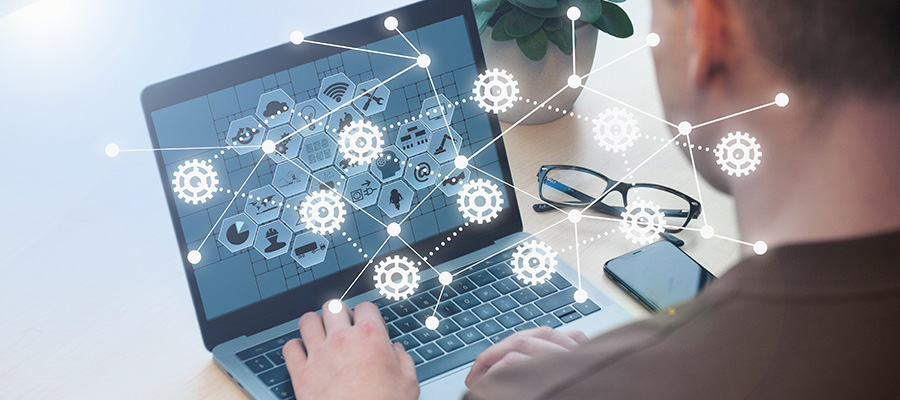Overview
- Introduction to IoT
- Benefits of IoT solutions
Our Approach
- Design and development processes
- Security and compliance measures
Solutions
- Smart Cities
- Connected Vehicles
- Smart Agriculture
Resources
- IoT Trends and Insights
- Case Studies and Success Stories
IoT
Introduction to IoT
The Internet of Things (IoT) refers to the interconnection of everyday objects through the internet, allowing them to send and receive data. This connectivity enables smarter and more efficient operations by facilitating real-time monitoring, control, and data analysis of connected devices.
Benefits of IoT Solutions
- Enhanced Efficiency: IoT solutions streamline operations by automating routine tasks and optimizing resource usage.
- Improved Decision-Making: Real-time data collection and analysis provide insights that lead to more informed decisions.
- Cost Savings: By reducing waste and improving operational efficiencies, IoT solutions can significantly cut costs.
- Better Customer Experience: IoT enables personalized and responsive services, improving overall customer satisfaction.
- Predictive Maintenance: Continuous monitoring of equipment helps in predicting failures and scheduling maintenance proactively, thus reducing downtime.
Our Approach
Design and Development Processes
Our IoT solutions are designed with a customer-centric approach, ensuring that each solution meets the specific needs and challenges of our clients. We follow a systematic process that includes:
- Needs Assessment: Understanding the unique requirements and objectives of our clients.
- Concept Development: Creating tailored solutions that address specific business needs.
- Prototype and Testing: Building and testing prototypes to ensure functionality and performance.
- Deployment: Implementing the solution in real-world environments.
- Continuous Improvement: Regularly updating and refining the solution based on feedback and evolving needs.
Security and Compliance Measures
Security is paramount in our IoT solutions. We implement robust security protocols to protect data integrity and privacy, including:
- End-to-End Encryption: Ensuring data is encrypted during transmission and storage.
- Authentication and Authorization: Implementing strong user authentication mechanisms to prevent unauthorized access.
- Compliance with Standards: Adhering to industry standards and regulations, such as GDPR and HIPAA, to ensure compliance and trustworthiness.
- Regular Audits: Conducting regular security audits to identify and address potential vulnerabilities.
Solutions
Smart Cities
Smart City solutions leverage the power of the Internet of Things (IoT) to transform urban living by seamlessly integrating a wide range of municipal systems. These solutions focus on optimizing critical urban functions such as traffic management, energy distribution, waste management, public safety, and more.
For instance, smart traffic management systems use IoT sensors, data analytics, and adaptive signal control to monitor and manage traffic flow in real-time. These systems can dynamically adjust traffic lights, reroute vehicles, and provide real-time updates to commuters, significantly reducing congestion. In many major cities, the implementation of such smart traffic systems has led to a reduction in traffic congestion by up to 30%. This improvement not only shortens commute times, making travel more efficient and less stressful for residents, but it also contributes to environmental sustainability by decreasing vehicle emissions and fuel consumption.
Beyond traffic management, IoT-enabled Smart City solutions extend to energy distribution, where smart grids and meters optimize electricity usage and distribution, enhancing energy efficiency and reliability. In waste management, smart bins equipped with sensors can notify waste collection services when they are full, ensuring timely pickups and reducing unnecessary collection trips. Similarly, public safety is enhanced through smart surveillance systems that can detect unusual activities, alert authorities in real-time, and improve emergency response times.
Collectively, these advancements contribute to creating more livable, sustainable, and resilient urban environments, improving the quality of life for city dwellers while addressing the challenges of modern urbanization.
Smart Agriculture
IoT solutions in agriculture have revolutionized the way farming operations are managed by leveraging advanced technology to provide farmers with critical, real-time data. These solutions offer detailed insights into soil conditions, weather forecasts, and crop health, enabling farmers to make informed decisions that enhance productivity and sustainability.
For instance, in a collaboration with a large agricultural firm, IoT technology was integrated into their irrigation systems. The IoT-enabled irrigation system was equipped with sensors that continuously monitored soil moisture levels, weather patterns, and crop growth stages. This data was transmitted in real-time to a centralized platform where it was analyzed, allowing the irrigation system to automatically adjust water distribution according to the specific needs of the crops.
The implementation of this smart irrigation system led to remarkable results. The farm reported a 25% increase in crop yield, attributed to the optimized water usage that ensured crops received the right amount of water at the right time. Additionally, the system reduced water consumption by 15%, demonstrating significant efficiency improvements and contributing to the sustainability of farming operations. These outcomes highlight the transformative impact of IoT in agriculture, showcasing how technology can drive both economic and environmental benefits.
Early Disease Detection
IoT plays a crucial role in early disease detection by enabling continuous health monitoring and data analysis. For example, smart wearables like fitness trackers or specialized medical devices can monitor vital signs such as heart rate, blood glucose levels, or sleep patterns.
In a real-world application, IoT devices are used to monitor patients at risk of developing diabetes. These devices continuously track blood glucose levels and other related metrics. The collected data is analyzed in real-time, allowing healthcare providers to identify abnormal patterns that may indicate the onset of diabetes. By detecting these changes early, doctors can intervene sooner, offering preventive treatments or lifestyle adjustments, which can significantly reduce the risk of the disease progressing. This proactive approach enhances patient outcomes and can lower healthcare costs by preventing more severe conditions.


